What to Cook with about 10 peppercorns – Tasty Recipes to Try
Looking for recipes with about 10 peppercorns? We’ve got simple, tasty ideas the whole family will love — perfect for everyday cooking.
Recipes with about 10 peppercorns
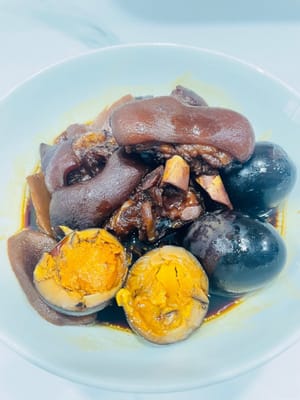
A small bowl of pork trotter with ginger warms the body and dispels wind, especially during autumn and winter—after all, putting on weight in autumn helps protect against the cold in winter! This delicious pork trotter with ginger is quite delicate to prepare. If preparing for someone confinement, start soaking the ginger two weeks in advance, bringing it to a boil daily and then turning it off. Soak for at least a week to fully unleash the ginger's aroma. My week-long pot of pork trotter with ginger is simply enticing: the trotter is a translucent brown, tender yet slightly chewy, and the flavor grows with every bite. The egg has a deep brown outer shell, but when cut open, the yolk is a firm orange-yellow, and even the core is imbued with the flavor of ginger vinegar. The ginger is crumb-free and not as spicy as those sold outside; it's refreshing and refreshing. The broth is just right—not sour, bitter, sweet, or thick—and even more flavorful than a carefully prepared broth. While Guangdong street vendors sell pig's trotters with plenty of ginger, a small piece of ginger, an egg, and a pig's trotter costs at least 20 yuan, and the flavor isn't quite there. It's nothing like home-cooked pork trotters, which are both affordable and flavorful, with every bite filled with heartfelt warmth. Speaking of which, in the month after my "divine beast" was born, we used a total of 150 pig's trotters! I just wanted to nourish my family, but the aroma filled the hallway. As if they had "smell radar," the neighbors would come to my house every day to "freeload" and take their meals away, treating me like a "makeshift pig's trotter delivery station." Everyone said my pig's trotters were so delicious they almost wanted to take the pot home with them!
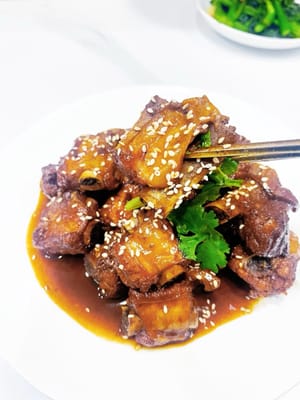
This plum and tangerine peel pork ribs recipe is super simple to season, even a novice can easily master! The sweet and sour taste of the plums and the richness of the tangerine peel, combined with the oyster sauce and dark soy sauce, locks in the savory flavor and color of the ribs. The ribs are stewed until the meat and bones are tender and almost crispy, and they fall off the bone with a light bite. The sauce coats each piece, and sprinkled with sesame seeds, the sour and sweet taste is appetizing, refreshing, and delicious with rice. This is a standout dish, so get ready now.
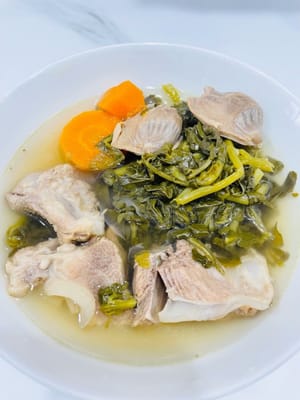
Watercress and Kidney Soup is a classic Cantonese soup. The salty aroma of the kidney stimulates the appetite and aids digestion, while also adding a richer flavor to the base. The combination of sweet and apricot kernels moistens the lungs and relieves coughs, without leaving a dry taste. The watercress, with its inherent sweetness, softens and dissolves in the broth, clearing heat, moistening the lungs, and promoting urination. This soup is refreshing and soothing, relieving both greasiness and dryness. No wonder Cantonese people love it!
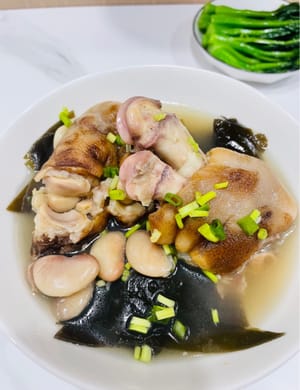
Sichuan and Chongqing cured meat is the same as durian - those who love it can take it as their life, and those who hate it have to take a detour when they smell it. Sichuan and Chongqing cured pig's trotters are a traditional delicacy with local characteristics. Its appearance is ruddy, the meat is firm and chewy, and it exudes a rich and mellow salty and fragrant cured flavor. It is usually served on the table during important festivals or when entertaining important guests. It is a "hard dish" on the table. ~ This cured pig's trotter stewed with kidney beans and kelp soup is salty and fragrant with the unique smokey smell of cypress branches. The skin is tough and the meat is glutinous. It is chewy and not dry. The kidney beans are full of fat, the flour is full of cured fragrance, and the kelp is slippery and wrapped in milky white soup. Every bite is full of the Sichuan and Chongqing style that cannot be dissolved. Even the soup wants to be soaked in rice and finished with a pot~~
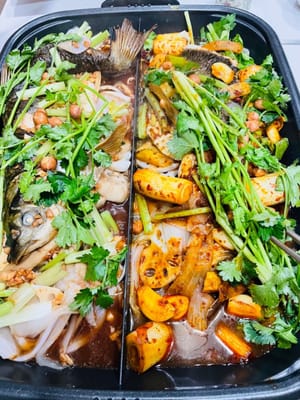
"On the left is the non-spicy seafood sauce section: the aroma of freshness hits your nose as soon as it's served. The fish is soaked in the sweet fragrance of seafood sauce, so tender it trembles when you pick it up with chopsticks. My child immediately started gnawing on the fish belly, even chewing the lotus root slices soaked in the sauce with a satisfying crunch, exclaiming, 'Mom, this is even better than what you get at restaurants!'—the seafood sauce gives the vegetables a subtle sweetness, light yet not bland at all. My child even ate rice faster than usual. On the right is our spicy dry pot section: the aroma of the dry pot ingredients fills the kitchen as soon as the sauce is poured on. The fish skin is grilled until slightly crispy, bursting with juice with every bite when coated in spicy oil. Even the celery stalks are infused with the spicy fragrance, becoming more flavorful the longer they cook. In the end, even the last bit of sauce at the bottom of the pot..." It had to be poured over rice and polished clean. The moment this pot of fish was served, the kids on the left exclaimed, "Mmm, this is so tender!" while we on the right were shouting, "Wow, this is so spicy and delicious!" The divider clearly separated the flavors; some were tender, some were fragrant. Even the usually picky kid devoured the lotus root slices. We used a special grill pan for fish that can be heated directly. It bubbled and steamed as soon as the flame was turned on, making it incredibly satisfying to eat and cook at the same time—the kids on the left were plucking at the tender, seafood-flavored fish, while we on the right were enjoying the juicy, spicy pieces of fish, taking a sip of wine, the spicy aroma mingling with the wine's fragrance, enveloped in the warmth—it was so addictive! If you don't have this special pan, a small alcohol stove with a regular grill pan works just as well, filling the air with a smoky, hearty atmosphere. Life is just too good!